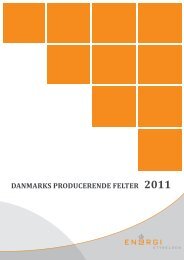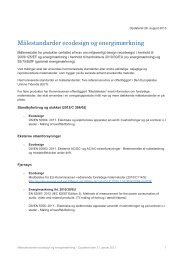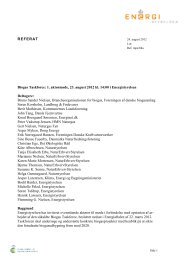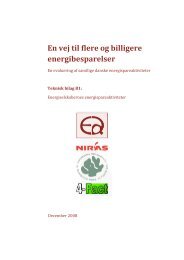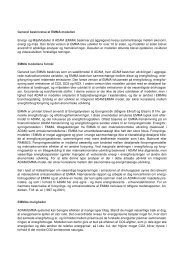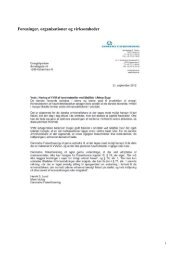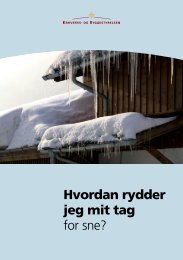Benthic Communities at Horns Rev Before, During and After Con
Benthic Communities at Horns Rev Before, During and After Con
Benthic Communities at Horns Rev Before, During and After Con
Create successful ePaper yourself
Turn your PDF publications into a flip-book with our unique Google optimized e-Paper software.
<strong>Horns</strong> <strong>Rev</strong>. <strong>Benthic</strong> communities Page 58<br />
Although no distinct distribution p<strong>at</strong>terns in abundance <strong>and</strong> biomass could be shown for<br />
the any of the most abundant species, st<strong>at</strong>istically significant differences in community<br />
structures between different zones on the scour protection <strong>at</strong> different distances from the<br />
monopile were found (Figure 3.18 <strong>and</strong> Table 3.15). Gradually overlapping zones with<br />
similarities in community structures were found within 2 metres of the monopile, whereas<br />
the community structure in zone closest to the monopile was st<strong>at</strong>istically significant different<br />
from the community structures closer to the periphery of the scour protections. No<br />
differences in the community structure were found between the NNE <strong>and</strong> the SSW sites<br />
with respect to current regimes.<br />
In the transect surveys, no significant differences between the NNE <strong>and</strong> SSW transects<br />
were found. In general, as in the quantit<strong>at</strong>ive samples, st<strong>at</strong>istical differences were also<br />
found between the st<strong>at</strong>ions close to the monopile <strong>and</strong> st<strong>at</strong>ions <strong>at</strong> the edge of the scour protection.<br />
Close to the edge of the scour protections, no st<strong>at</strong>istical differences were shown<br />
between st<strong>at</strong>ions across the zones with different size of stones. Three overlapping zones on<br />
the scour protections were identified. One distinct zone covered the distance from the monopiles<br />
to 10 m from the piles, the second zone covered the distance from 6 m to 12 m <strong>and</strong><br />
the last zone covered the distance from 10 m to 16 m from the monopile. The coverage<br />
<strong>and</strong> frequency of Jassa marmor<strong>at</strong>a, Metridium senile <strong>and</strong> Cancer pagurus decreased towards<br />
the edge of the scour protection while the occurrence of the s<strong>and</strong> dwelling bristle<br />
worm (Lanice conchilega) <strong>at</strong> the outer edge of the scour protections contributed to the difference<br />
between the zones. The sea anemone (Sargartiogeton lacer<strong>at</strong>us) was less frequent<br />
close to the monopiles <strong>and</strong> <strong>at</strong> the periphery of the scour protections compared to the zone<br />
2-10 metres from the monopiles.<br />
Scour protections, spring Scour protections, autumn<br />
Jassa marmor<strong>at</strong>a<br />
Stress: 0.2<br />
Stress: 0.2<br />
2003<br />
2004<br />
2005<br />
Jassa marmor<strong>at</strong>a<br />
Mytilus edulis Mytilus edulis<br />
Stress: 0.23<br />
Stress: 0.23<br />
2003<br />
2004<br />
2005<br />
Doc. No. 2572-03-005 rev. 4




